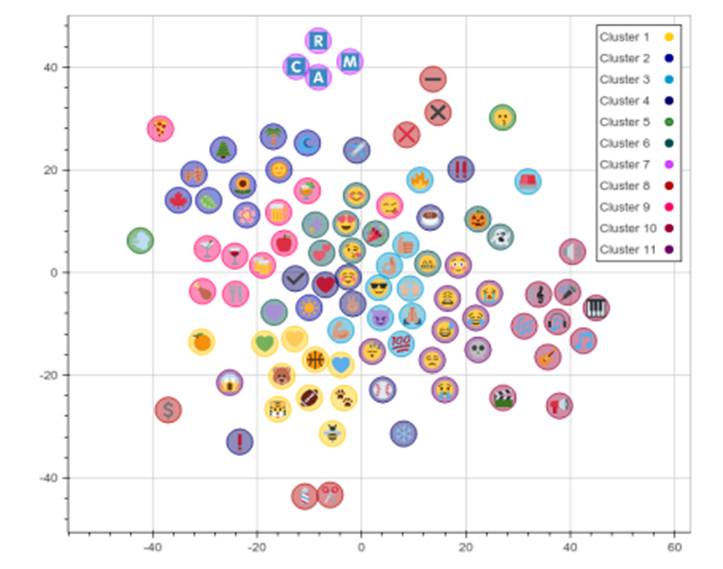An automatic method extracts the meaning of popular emojis
Developed by Francesco Barbieri, Francesco Ronzano and Horacio Saggion, researchers of the Automatic Natural Language Processing Research Group.
Francesco Barbieri, Francesco Ronzano and Horacio Saggion, researchers of the Automatic Natural Language Processing (TALN) research group at UPF’s Department of Information and Communication Technologies (DTIC), have performed automatic analysis of 10 million Twitter messages published by north American users and have developed a method for automatically characterizing the meaning of the popular emojis. They are to present the study as a communication at the Language Resource and Evaluation Conference 2016, to be held from 23 to 28 May in Portoroz (Slovenia).
In recent times, emojis or ideograms of Japanese origin have become enormously popular and have been widely published in web communication. They include a whole universe of meanings that goes beyond the traditional emoticons of graphic symbols used to convey moods usually formed from ASCII characters. Emojis allow us to describe objects, situations and even feelings using small images, providing a quick visual way of communicating. Hence we find emojis in smartphone applications, in instant messaging, social networks, social media, on the popular Twitter, Facebook, Whatsapp, etc.
Characterizing the meaning of ideograms
Through the automatic analysis of 10 million messages on Twitter and the method devised by researchers Saggion, Barbieri and Ronzano of the TALN research group it is possible to automatically characterize the meaning of emojis, which means it is possible to compare ideograms “semantically”, i.e., according to their meaning.
For example, the method is able to ascertain the semantic proximity existing between the emojis  and
and  , or between
, or between  and
and  .
.
In addition, the model allows understanding the meaning of emojis and suggests the words that are closest to a particular ideogram. For example, the emoji 
points to “soccer”, “football” “regionals” and so on. Conversely, the method developed by these researchers, from a specific text allows suggesting the most appropriate associated ideograms to complement and graphically enrich its meaning.
The new models developed have been compared with experiments of semantic similarity, “comparing the results of our models with human evaluation, as well as conducting a thorough qualitative assessment”, stated the authors of the work.
In short, emoticons and ideograms are not just a thing of adolescents in their text messages, but they have positioned themselves as a kind of nuanced expression that has the ability to cross language barriers.
Reference work:
Francesco Barbieri, Francesco Ronzano and Horacio Saggion (2016), “What does this Emoji Mean? A Vector Space Skip-Gram Model for Twitter Emojis“, Language Resource and Evaluation Conference 2016, 23 - 28 May, Portoroz (Slovenia).

